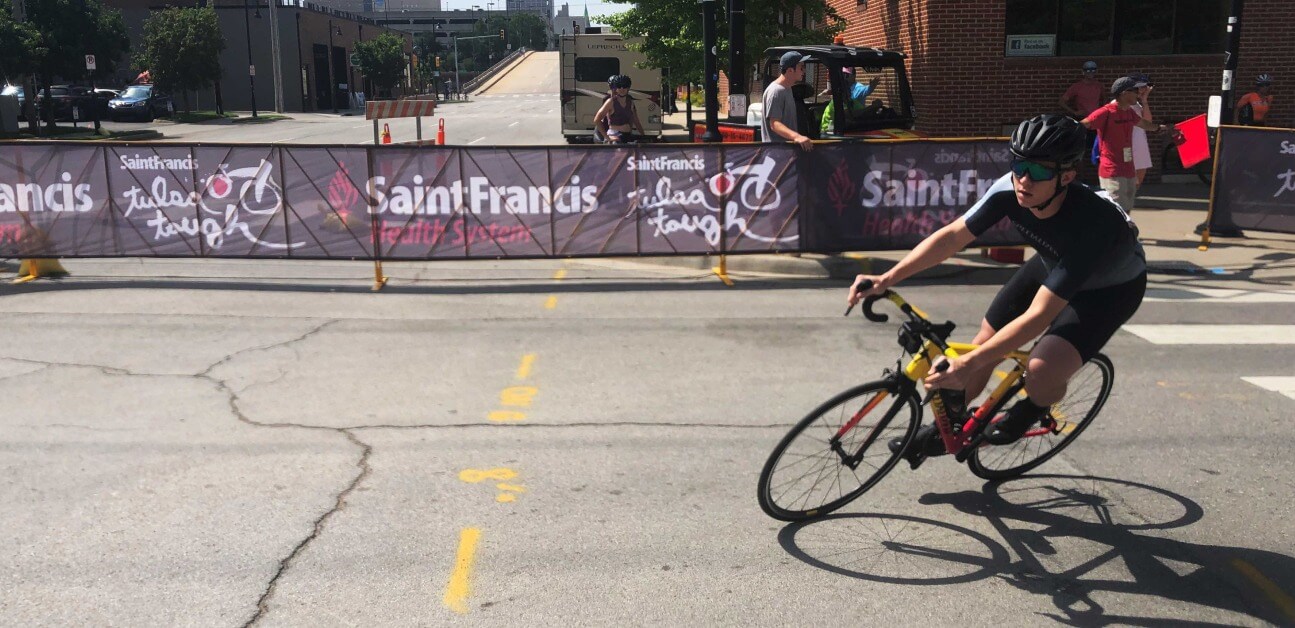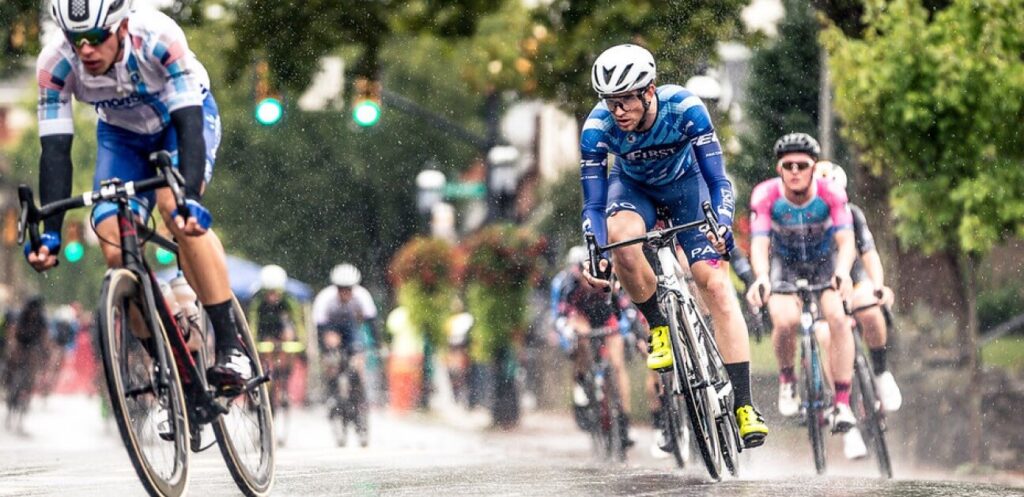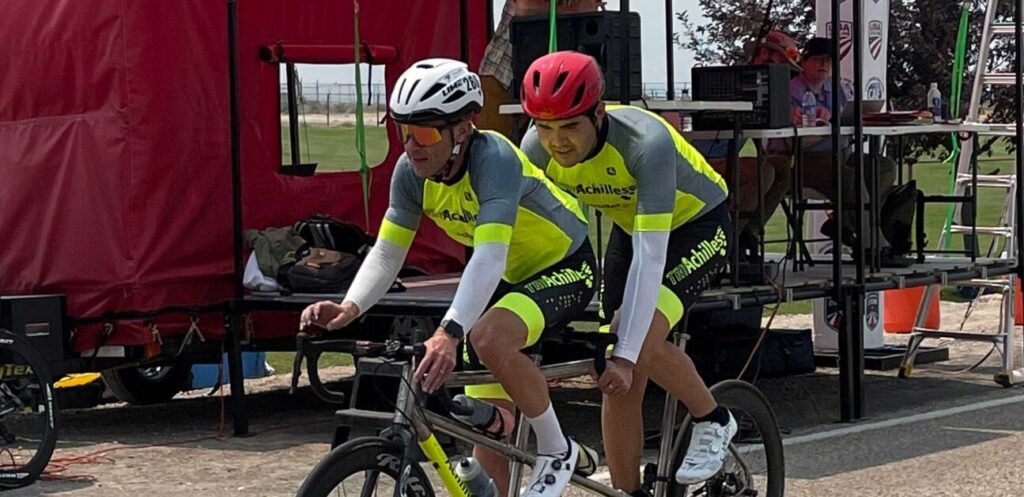From Couch to Crit with Successful Athlete Logan McPherson

Logan McPherson, a soon-to-be father from Dallas, Texas, wanted to get in on the fast-paced action of crit racing. With the help of Jeff Linder of NorCal Cycling and TrainerRoad, Logan went from sitting on the couch to racing in one of the hardest criteriums in America—Tulsa Tough, and he has some tips to help any beginner racer.
Share your success story and tell us how TrainerRoad helped you reach your goals.
The Starting Point
Logan grew up around bikes, but the idea of sitting on a bike for five hours wasn’t something he wanted to do. On the other hand, criteriums, with their fast pace and plenty of action, seemed like a perfect personality match. However, Logan needed some help because he lacked background knowledge and experience in endurance sports. So he reached out to Jeff Linder, an excellent and experienced crit racer from northern California, with the idea to create a YouTube series called Couch to Crit.
Adaptive Training
Get the right workout, every time with training that adapts to you.
Check Out TrainerRoadLogan began training with TrainerRoad with a 200w FTP in December of 2020. By March of 2021, he was completing practice races and competed in his first race in April. Along the way, Logan raised his FTP to 260w. During Tulsa Tough, a premiere crit race, Logan shared some tips based on his experience on the Successful Athletes Podcast.
Five Tips for Beginner Racers from Logan McPherson
Going from couch to crit racing can seem like a giant leap, and rightly so. From improving your fitness to race tactics, Logan has some tips for anyone that wants to start racing.
1. Pick the Right Training Volume
It’s easy to think that all racers use high-volume training, but that’s not the case. The best training volume for you is the one that matches your experience, goals, time availability, and recovery capabilities. With a career, a baby on the way, and no training experience, Logan chose a low-volume training plan. At three and a half hours of training per week, low-volume ensures consistent training and plenty of flexibility. If you’re new to structured training, we recommend starting with a low-volume plan.
One of the things that makes low-volume a great choice is that you can add additional training stress to your week in the form of unstructured rides, strength training, or group rides. For Logan, this meant he could complete practice races without overwhelming himself.
2. Practice Handling Skills
Criteriums are known for aggressive racing with fast corners. Aside from fitness, successful criterium racing hinges on your bike handling skills—especially cornering. When cornering in a group, the riders ahead of you are frequently going to dictate where you go, and to a lesser extent, the speed you’ll carry through the turn. Smooth cornering helps you preserve speed and momentum, which means less energy expenditure.
In addition to working on cornering, practicing how to position in a fast group is essential. Positioning in an aggressive group consumes energy, but it’s worth it in a criterium. An efficient technique is to anticipate the accelerations and movements of the rider you are following. You can practice this during lively group rides.
3. Pre-Ride the Course
Crit courses come in all shapes and sizes but are typically about a mile long and feature between 2 and 6 corners. Some include short steep hills while avoiding any sustained climbs. If possible, pre-ride the course and make notes on any course features. If you can’t pre-ride, you can use Google Earth to preview the race course well in advance.
Logan didn’t have a chance to pre-ride the three courses at Tulsa Tough, which led to a few surprises. On the final day of racing, the course features a notorious kicker called Cry Baby Hill. While Logan knew about Cry Baby Hill, he didn’t realize there was an uphill drag shortly after the crest of the hill. Even a quick lap on the course can help set mental expectations and provide the necessary details for a race plan.
4. Plan Your Strategy
After you preview the course, plan your strategy. Logan suggests remembering that the last few laps can be the hardest, so saving energy is a top priority. Saving energy all comes down to intelligent positioning within the group.
Field sizes and courses can vary greatly, so it’s important to develop tactics for any race. The primary goal is to save energy by playing to your specific strengths and limit your weaknesses. If you’re going to attack the group, do so in the place that’s most advantageous for you. Criteriums focus on rapid strategic decisions, and developing your racecraft takes time and experience. For more information on race tactics, check out our Race Analysis YouTube Playlist.
5. Analyze Your Performance
In the heat of the moment, it’s easy to forget what happened within the race. Logan records his races and then reviews them later. During this process, he learned that he was grabbing his brakes far too often, wasting tons of speed and energy. If you can’t record your race, take a few moments to write down what went well, what didn’t, and anything that stuck out. You can easily do this in the Ride Notes feature on the TrainerRoad Calendar.
What’s Next
With a child on the way, Logan knows his life and schedule are going to change. He plans on racing more crits until the baby is born, but he is unsure exactly how training and racing will fit in. Once he gets settled into parenthood, he plans to continue racing and moving up the USAC category ranks.


